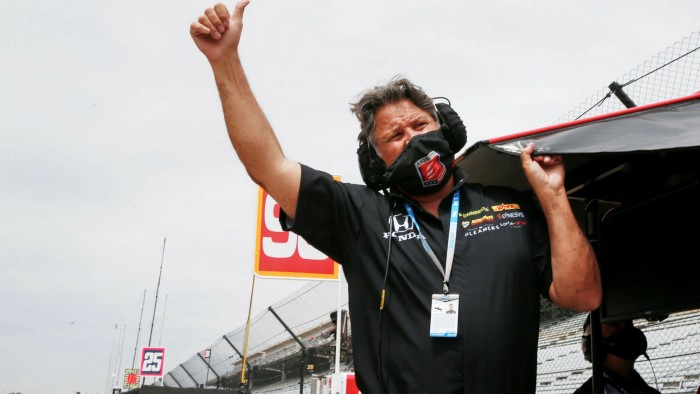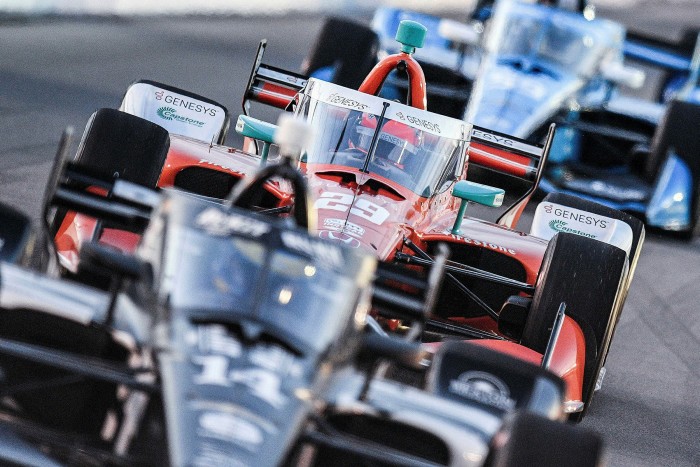Michael Andretti pushes to become F1’s 11th team

Roula Khalaf, Editor of the FT, selects her favourite stories in this weekly newsletter.
Michael Andretti is one of the US’s most successful IndyCar team owners, and also involved in Formula E, Imsa, Extreme E and the Australian Supercars Championship. His time spent at racetracks is not just for fun.
So, while Formula One’s A-list celebrities were strutting their stuff for the cameras before the start of this month’s Miami Grand Prix, the former grand prix driver was hard at work.
Amid a push to get Andretti Global on to the F1 entry list for 2024, he was courting Mohammed Bin Sulayem, president of the sport’s governing body, the FIA, to gain support for his plans.
But, no matter how much Andretti wants his F1 move to happen, and for all the support he has from some in the paddock, inclusion is far from assured.
Andretti had hoped to get a place on the F1 grid through a takeover of the Alfa Romeo-branded Sauber team last year. However, at the eleventh hour, with contracts due to be signed, the owners said they wanted to retain some control over the organisation.
The collapse of that deal, and the fact no other team is for sale, has pushed Andretti to try to create an F1 team himself. Two critical elements are already in place. Financing has been lined up, which is believed to include support from Gainbridge, the digital financial products company sponsoring the Andretti IndyCar team. And there is a provisional agreement for a supply of Renault engines.

In the intensely political world of F1, though, Andretti’s actions alone will not determine whether his team can compete: F1’s structure requires him to have the full backing of current teams for an extra grid slot to be made available.
Some team bosses, such as Zak Brown, the McLaren chief executive, hail Andretti’s arrival as a great boost to F1. He talks about it increasing the sport’s sponsorship exposure in the US by more than $100mn a year.
Others, though, are not convinced. The chief concern for the sceptics is that the arrival of a new team will dilute the shared commercial rights income.
More from this report
America starts to fall in love with Formula One
F1 begins to purr as changes revolutionise motor racing
Cost cap ushers in return to profitability in Formula 1
Right place, wrong time? Drive to Survive star George Russell arrives at Mercedes
Hope of a 100% green fuel leads Formula One’s efforts to tackle climate change
Benedetto Vigna will keep Ferrari’s technology in pole position
Hamilton inspires industry to accelerate F1 diversity initiatives
In 2021, as F1 started to emerge from the effects of the Covid-19 pandemic, the 10 current teams split $1bn of revenue between them. The arrival of a new team would mean sharing the money between 11 teams — so there is an automatic drop in income for the existing teams of just under 10 per cent.
In a bid to head off that scenario, F1 teams, the FIA and the Formula One Management operating company agreed that any new entrant would have to pay $200mn to compensate for any potential loss. This was enshrined in the Concorde Agreement that governs the sport until 2025.
Andretti is willing to pay this. However, what is in effect a one-off payment of $20mn for each current team still appears to fall short of the long-term losses likely to be incurred.
So, in simple terms, until Andretti can prove that his arrival will deliver a greater financial benefit for everyone, he is unlikely to get the support required for an F1 entry to be accepted.
“That may sound a bit dry but the value of Formula One is that it’s a limited amount of franchises,” says Toto Wolff, the Mercedes boss. “And we don’t want to dilute that value by just adding teams.”
To some, the fact that a potential new entrant as big as Andretti Global can become bogged down in a dispute over money is no shock to some. “Ten teams sharing all the money: it’s paradise for them,” says Ian Phillips, a former F1 commercial director. “They don’t want anybody interfering with it.
“Thirty years ago, there were 19 teams. We all survived and actually the business was better. Now, they have got their hands on the money and, because they can vote to keep it for themselves, they do.
“But, for the benefit of the sport as a whole, it is so short sighted. Unfortunately, the sport today is dominated by money. It costs a ridiculous amount of money to put two cars on the grid, and that is totally wrong.”
In Miami, Andretti tried to pull together a document of signatures of all the current team bosses to take to the FIA and Formula One Management. The attempt fell flat.
His best hope now is to lobby Bin Sulayem and Stefano Domenicali, the F1 chief executive. But, while there is talk of progress, he still needs the backing of the teams.
Andretti has approved the construction of a new factory in Indianapolis and has begun hiring F1 staff as he anticipates some form of guidance from the FIA by September.
Everything in Andretti’s direct control is in place but the fate of his project lies in winning over the doubters. “I think there’s millions of people embracing it,” he said. “It’s just not the right people at the moment.”
FT Scoreboard
Sign up to the FT’s weekly newsletter covering the multi-billion-dollar global sports industry. www.ft.com/scoreboard
Comments